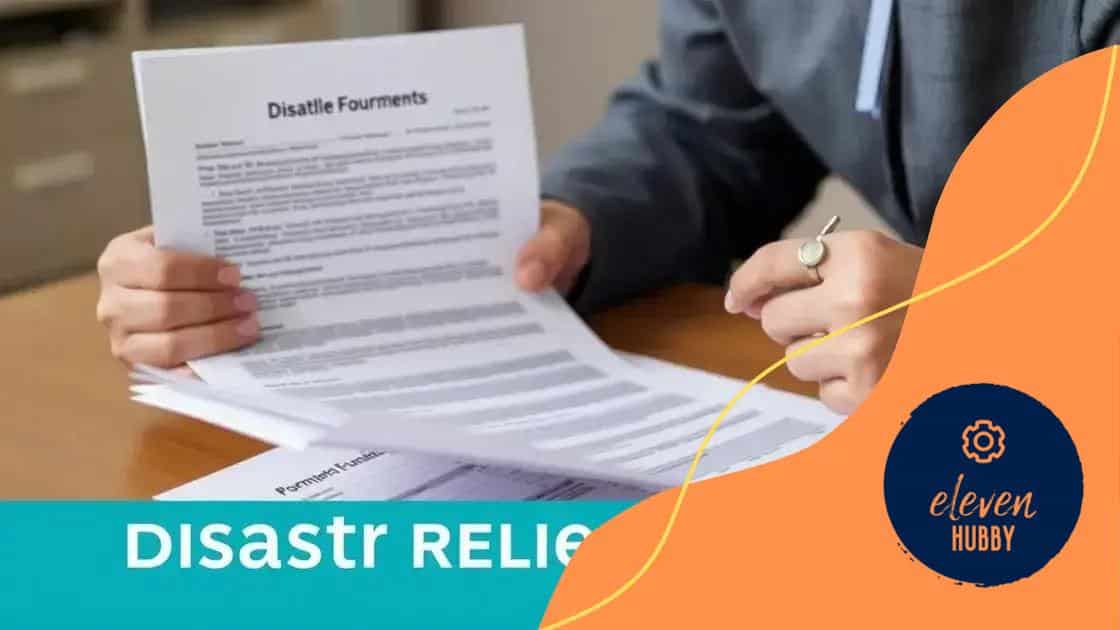How to access federal disaster relief funds in 2025

To access federal disaster relief funds in 2025, gather necessary documentation, complete the application accurately, and utilize available resources for assistance throughout the process.
How to access federal disaster relief funds in 2025 may seem overwhelming, but it doesn’t have to be. Ever wondered what it takes to secure the assistance you need during tough times? Let’s break it down together.
Understanding federal disaster relief programs
Understanding federal disaster relief programs is essential for anyone affected by disasters. These programs provide crucial financial assistance and resources to help families and communities recover and rebuild.
What are federal disaster relief programs?
Federal disaster relief programs are government initiatives designed to assist individuals and communities impacted by natural disasters. They offer financial aid, housing assistance, and essential resources to help people get back on their feet.
Types of federal assistance
There are various types of aid available through these programs. Each type is tailored to meet different needs:
- Individual Assistance: Helps those affected with temporary housing and other essential needs.
- Public Assistance: Provides funding for rebuilding infrastructure and emergency response services.
- Hazard Mitigation Assistance: Funds projects to reduce future disaster risks.
These aids are crucial for ensuring communities can recover effectively. The process can vary, so it is essential to understand what is available. When disasters strike, knowing how to access these resources can make a significant difference.
How federal programs work
The federal government works closely with state and local authorities to assess damage and determine the needs of communities. After a disaster declaration, individuals can apply for assistance through the Federal Emergency Management Agency (FEMA) or other designated agencies. This process often includes filling out applications and providing documentation of damages and losses.
Understanding the eligibility criteria is important. Factors such as income, insurance coverage, and the extent of damage can affect your qualification for aid. However, help is available, and many resources exist to guide you through the application process.
To find the right assistance programs, it’s beneficial to stay informed about federal disaster relief policies. This knowledge will empower you during recovery. The more information you have, the better prepared you will be when disaster strikes.
Eligibility criteria for federal assistance
Eligibility criteria for federal assistance can vary based on the specific disaster and the aid program. It’s important to understand these requirements in order to access the needed support.
General eligibility requirements
Most federal assistance programs have a few common eligibility criteria. Here are the main ones:
- Location: Applicants must reside in a declared disaster area.
- Documentation: Proof of loss and damage is typically required.
- Income limits: Some programs have income thresholds that determine eligibility.
Beyond these basics, each program may have specific guidelines. It’s essential to review the requirements carefully for the assistance you seek.
Special considerations
Some groups may also qualify for additional assistance. For instance, households with elderly members, children, or individuals with disabilities might receive prioritized support. It’s beneficial to note your family’s unique situation when applying for aid.
Another critical factor involves previous assistance received from different programs. If you have previously benefited from federal funds, it’s important to verify whether this affects your current eligibility.
Understanding the eligibility criteria can help simplify the process. Knowing what to expect allows you to prepare the necessary documents and increases your chances of obtaining aid.
Steps to apply for disaster relief funds

Applying for disaster relief funds is a vital process for those affected by calamities. Understanding the steps to apply for disaster relief funds can make a significant difference in your ability to receive assistance.
Gather necessary documentation
The first step involves collecting all required documents. You need to provide proof of identity, evidence of the disaster’s impact, and any related financial statements. Having these documents ready helps streamline your application process.
- Identification: A government-issued ID is usually required.
- Proof of residence: Documents like utility bills can establish your address.
- Damage evidence: Photographic proof or damage assessments can support your claim.
Once you have these documents, you can proceed with the application.
Fill out the application form
The next step is to complete the application. You can often do this online, but paper applications may also be available. Make sure to fill out each section accurately and truthfully.
Take your time to review your application. Errors can lead to delays in processing or even denial of assistance. Double-check the information provided to ensure everything is correct.
Submit your application
After ensuring your application is complete, submit it according to the guidelines provided. Pay attention to the submission deadline to avoid missing out on funding opportunities. Keeping a copy of your submitted application is also advisable for future reference.
Once your application is submitted, you may need to wait for further communication from the relevant agency. They might contact you for additional information or clarification. It’s crucial to respond promptly to any inquiries to avoid delays.
Common challenges in the application process
Applying for federal disaster relief can be complex. Many individuals face common challenges in the application process that can hinder their ability to receive the help they need.
Documentation issues
One of the biggest challenges is gathering the necessary documentation. Applicants often struggle to collect all required forms and evidence of their losses. This can lead to incomplete applications, which may delay approval.
- Lost paperwork: Many people lose important documents during a disaster, making it hard to prove their claims.
- Uncertainty about requirements: Applicants may not know exactly what documents are needed, leading to confusion.
- Time constraints: Often, agencies give limited time to submit documents, adding pressure to the applicants.
These documentation challenges can create significant barriers in accessing aid.
Understanding the process
Another common issue is understanding the application process. Many applicants do not know the steps they need to take, which can lead to mistakes and delays.
It’s important to take the time to read and understand the guidelines provided by the relevant agencies. Having a clear understanding of the necessary actions can prevent frustration and optimize the chances of receiving assistance.
Additionally, the language used in application forms can often be technical. This might confuse applicants who are not familiar with legal or official terminology.
Waiting for approval
The waiting period for application approval can also be a challenge. After submitting an application, many individuals experience anxiety over not knowing when they will receive help. This uncertainty can create stress during an already difficult time.
It is essential to follow up on your application status. Keeping communication open with the agency can provide updates and ease worries.
Resources for additional support
Finding resources for additional support is crucial after experiencing a disaster. There are many options available to help you navigate the recovery process effectively.
Government resources
The federal government provides various resources for those in need. Agencies like the Federal Emergency Management Agency (FEMA) offer assistance programs that can help with recovery. Here are a few resources you can explore:
- Disaster Recovery Centers: These centers offer in-person assistance, allowing you to talk to specialists about your situation.
- Online resources: FEMA’s website has a wealth of information regarding applications and eligibility.
- Helpline services: You can contact FEMA’s helpline for immediate assistance and guidance.
Utilizing these resources can speed up your recovery.
Community organizations
Local community organizations play a vital role in providing support. Nonprofits and local agencies often offer immediate relief services, such as food, shelter, and counseling. They can also assist with navigating federal applications.
Building relationships with these organizations can provide ongoing benefits throughout the recovery process. Many of them offer support groups, which can be helpful for emotional healing.
Online support networks
In addition to local support, online resources can connect you with others facing similar challenges. Websites and forums can provide advice, share personal experiences, and offer community support.
Social media platforms also host groups focused on disaster recovery. Joining these groups allows you to ask questions, share resources, and find comfort in shared experiences.
FAQ – Frequently Asked Questions about Accessing Federal Disaster Relief Funds
What types of assistance are available through federal disaster relief programs?
Federal disaster relief programs offer various types of assistance, including individual assistance for affected households, public assistance for rebuilding infrastructure, and hazard mitigation funds.
How can I gather the necessary documentation for my application?
To gather documentation, keep records of your identity, proof of residence, and evidence of damage. Use photos, bills, and reports to support your claims.
What should I do if I encounter challenges during the application process?
If you face challenges, consider reaching out to local community organizations or disaster recovery centers for help with your application and to clarify any confusion.
How long will it take to receive assistance after applying?
The time to receive assistance can vary. Processing times depend on the complexity of applications, but staying in contact with the relevant agency can provide updates on your status.






